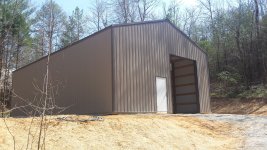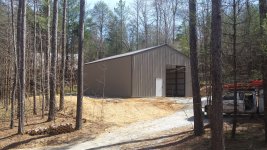Concrete is a very simple thing. When you start modifying it or doing something outside the norm, you run into problems. The number one reason for concrete to crack is the amount of water added to the mix. When you add water, you increase the volume of the concrete. When water evaporates out of the concrete, it contracts and that causes the cracking. Soil compaction is secondary, but it takes years for the soil to settle enough to cause any issues. Usually it doesn't even crack. I've remodeled countless homes where the concrete does not touch the dirt under it and there are no cracks. Usually what you with soil that isn't compacted is shifting or movement of the entire structure. Rarely will it be a cracked slab unless it's really extreme.
Yes, to a point. Generally excess water results in low psi concrete. Low psi concrete does not inherently crack because it's more flexible. Generally the large displacement cracks are the result of a base issue. The small alligator cracks on the surface are from excess moisture evaporating from the concrete before the slab cured. However this often results from the slab drying out too quickly and can be solved with curing compounds, blankets or watering the slab. Generally the alligator cracks are more of a cosmetic issue, however they can also be a indicator of something worse: slab curl.
Rebar holds the concrete together. No matter how dry you make your mix, odds are good that there will still be cracks. Most cracks are so small that you never even notice them. Rebar holds the concrete tightly together so the minor cracking remains smooth and unseen.
I would agree with this, but concrete, properly set on a quality base and properly cured will never have a crack in it. Cracks are a sign of a failure. However, the cost to produce the perfect slab also has to be balanced against the level of cracking that is acceptable to the planned use.
To work properly, rebar has to be in the middle of the pad. You have to use chairs under the rebar to do this. It is 100% impossible to spread the rebar and lift it at the same time like some contractors claim to do. In every case, you end up with rebar at the bottom of the pour on top of the dirt or plastic.
Totally agree with this. However to counteract slab curl there is now a push to relocate the bars to the upper 1/3 of the slab. Frankly, I think that one of the advantages to structural fiber is that the material disbursed throughout the slab so it's location is infinite.
Wire is completely worthless because there is no way to place it on chairs, so the contractors lie to the clients about pulling it up while they spread it. They are standing on the wire, spreading thousands of pounds of concrete over it, and usually pretend to pull up the wire a couple of times when they first start spreading the concrete for pictures. Then they get to work spreading the load and quit pretending to lift it. It is 100% impossible to get wire mesh in the middle of a large pad. Wire mesh is great for sidewalks, small pads that you don't have to walk on, and things like that.
Again, I totally agree with this.
Fiber mesh is a product that adds to holding the concrete together when it cracks, but it's a poor replacement for rebar. It's a good extra to add to rebar if you want it. If a pro tells me that he will use fiber instead of rebar, I wouldn't hire him. He just failed his first test of being honest to me.
Ah, here we disagree. Micro fiber is only useful in trying to control the afore mentioned shrinkage cracks resulting from improper curing. Macro fiber is structural and can replace rebar. In fact, I think it might be superior to rebar!
Plastic is used to keep the concrete from drying out too fast when pouring on pourus surfaces. Sand is the worse. When you have the correct mixture of water in the mix, you want it to slowly cure over time. When on certain surfaces, like sand, the water in the concrete is wicked out from the bottom and you end up with a week slab that will not cure properly. It's not needed when pouring on compacted clay, but it doesn't hurt anything if used and it's cheap enough to be good insurance if you are unsure about your soil.
This is true. However placing plastic under the concrete and having a breeze and/or sun hit the slab will dry the top out too quickly resulting in alligator cracking and potentially slab curl. Curing compounds exist for a reason! If you can afford it, wet curing is the ultimate method for preventing curl.
My guess is the biggest reason for the cost increase is the need for the pumper. Around here, they will remove a wall to get the cement truck into position, or bring in a bunch more workers to wheel barrow it to the far side on a ramp made of 2x12's across the top of the rebar.
Even then, there are small portable pumping units that would be appropriate for a job like this. That said, the labor to tie the rebar cage would also be expensive.

